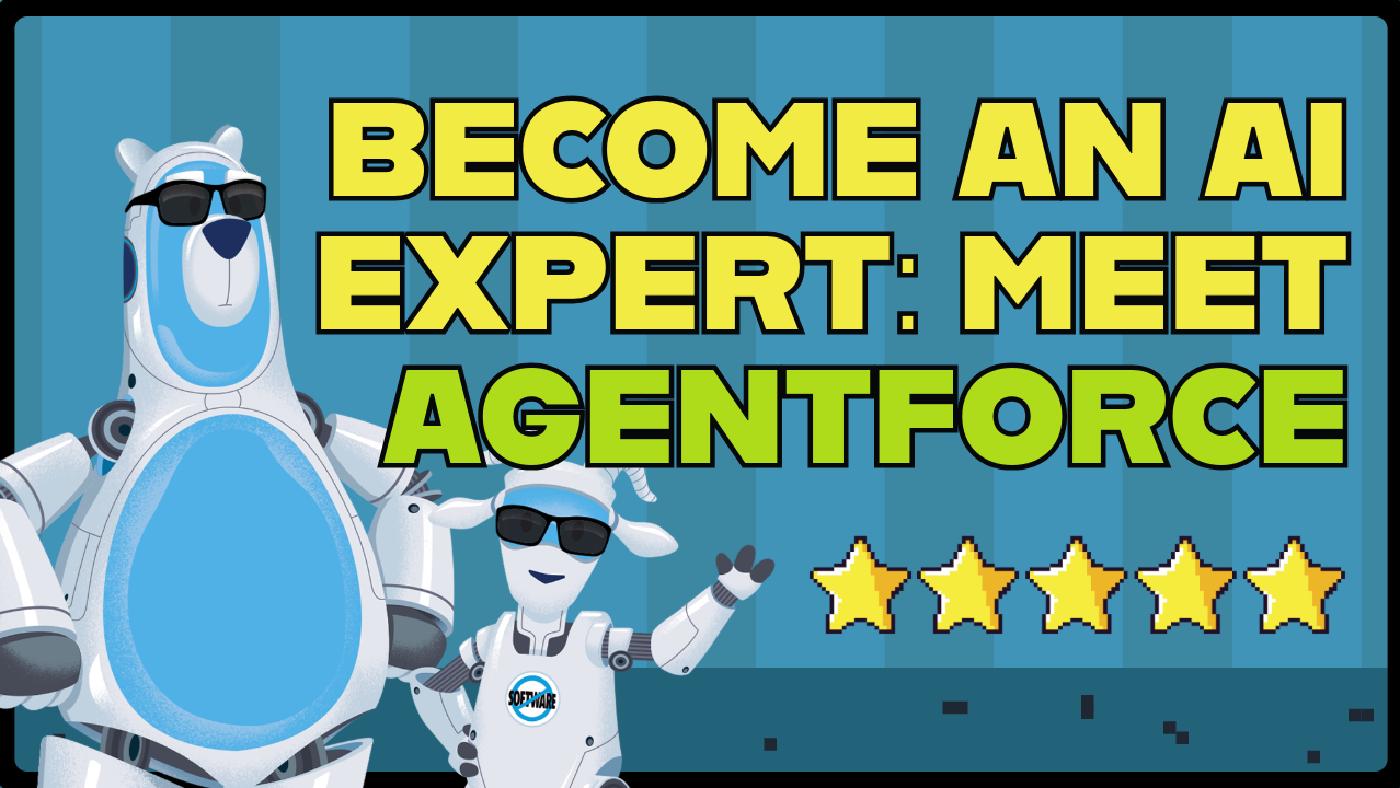Post
Become an AI Expert: Meet Agentforce
Posted on December 30, 2024 (Last modified on November 7, 2025) • 3 min read • 514 wordsAutonomous Apps and You

Introduction
Welcome back to our series on becoming an AI expert! In this post, we’re diving into the world of Agentforce, Salesforce’s cutting-edge autonomous agents. These intelligent tools leverage large language models (LLMs) to simplify and enhance customer and employee experiences.
We’ll explore the helpful Trailhead module Agentforce Agents: Quick Look, which introduces you to the capabilities, structure, and practical uses of these agents. By the end, you’ll understand how these proactive apps operate and how they can transform your organization. Don’t forget to take the Trailhead module yourself to deepen your knowledge and earn some points too!
Discover Agentforce Agents
Learning Objectives
- Define an autonomous agent.
- Explain how Agentforce agents help get work done.
Highlights
Agentforce agents are proactive, autonomous applications that streamline tasks for employees and customers. These agents utilize LLMs to analyze and understand the full context of interactions, then autonomously reason and decide on the next steps.
Key features include:
- Generating consistent responses aligned with company guidelines using trusted business data like Salesforce CRM and Data Cloud.
- Operating across platforms 24/7, such as self-service portals and messaging channels.
- Customizable setup with clicks, not code—deploy agents in minutes.
- Escalation mechanisms to involve human agents when tasks exceed their scope.
Out-of-the-box Agentforce agents include:
- Service Agent: Replaces traditional chatbots for enhanced customer service.
- Sales Development Representative (SDR): Handles prospect queries and schedules meetings.
- Sales Coach: Assists sales teams with role-playing and tailored pitch practices.
- Merchandiser: Simplifies e-commerce management with data-driven insights.
- Buyer Agent: Enhances the B2B buying experience with personalized assistance.
- Personal Shopper: Acts as a digital concierge for e-commerce customers.
- Campaign Optimizer: Automates marketing campaigns from creation to optimization.
Key Components of an Agent
Every Agentforce agent is built with the following components:
- Role: Defines the agent’s purpose and broader goals.
- Knowledge: Includes company articles, CRM data, and external resources via Data Cloud.
- Actions: Predefined tasks like running flows or executing Apex.
- Guardrails: Operational boundaries set with natural language instructions or Einstein Trust Layer features.
- Channels: Platforms where agents operate, such as CRM, mobile apps, and Slack.
Agentforce Reasoning Engine
At the heart of every Agentforce agent lies the Reasoning Engine, which powers:
- Multi-turn chat: Adapts to conversational context for accurate responses.
- Topic classification: Ensures user queries are matched with relevant topics.
- Instructions and actions: Guides agents to execute tasks effectively.
- Knowledge retrieval: Uses techniques like Retrieval Augmentation Generation (RAG) for high-quality responses.
- Searchable public data: Accesses public information securely through the Einstein Trust Layer.
Ready to Lead?
Discover the potential of Agentforce by completing the Agentforce Agents: Quick Look module here. Learn how these intelligent agents can revolutionize your organization with their autonomous, proactive approach to task management.
Take the module, pass the quiz, and get hands-on experience building your first Agentforce agent!
What’s Next?
In the next post, we’ll delve deeper into the Agentforce agents applied to Service and how they’re assisting customers and human agents in the space! Stay tuned for actionable insights and practical advice!
Until then, keep working hard, smart, and happy. We’ll see you in the cloud!